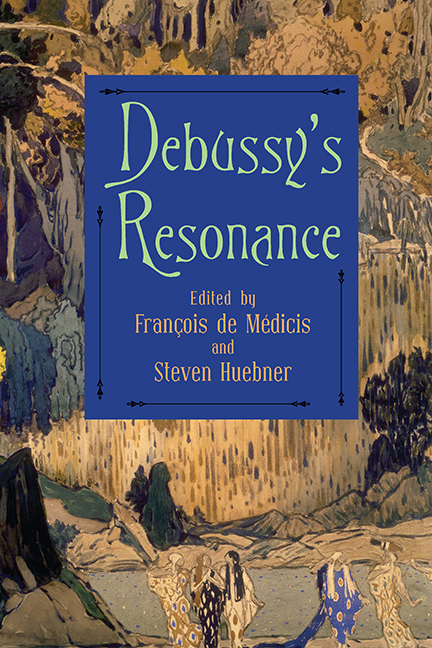Book contents
- Frontmatter
- Contents
- List of Illustrations
- Acknowledgments
- List of Abbreviations
- Introduction
- Part One Historiographical and Editorial Issues
- Part Two Style and Genre
- 5 The “Song Triptych”: Reflections on a Debussyan Genre
- 6 Composing after Wagner: The Music of Bruneau and Debussy, 1890–1902
- 7 Between Massenet and Wagner
- 8 Debussy's Concept of Orchestration
- 9 Oriental and Iberian Resonances in Early Debussy Songs
- Part Three History and Hermeneutics
- Part Four Theoretical Issues
- Part Five Performance and Reception
- List of Contributors
- Index
8 - Debussy's Concept of Orchestration
from Part Two - Style and Genre
Published online by Cambridge University Press: 27 July 2019
- Frontmatter
- Contents
- List of Illustrations
- Acknowledgments
- List of Abbreviations
- Introduction
- Part One Historiographical and Editorial Issues
- Part Two Style and Genre
- 5 The “Song Triptych”: Reflections on a Debussyan Genre
- 6 Composing after Wagner: The Music of Bruneau and Debussy, 1890–1902
- 7 Between Massenet and Wagner
- 8 Debussy's Concept of Orchestration
- 9 Oriental and Iberian Resonances in Early Debussy Songs
- Part Three History and Hermeneutics
- Part Four Theoretical Issues
- Part Five Performance and Reception
- List of Contributors
- Index
Summary
How Was Orchestration Taught in Paris around the Turn of the Twentieth Century?
From the perpsective of today's music curricula, perhaps the most surprising aspect of Paris Conservatoire teaching in the late nineteenth century is that there were no classes in orchestration. Aspiring composers like Charles Koechlin, Gustave Charpentier and Florent Schmitt learned to write Prix de Rome cantatas in Massenet's composition class, as Debussy had done under Ernest Guiraud in the 1880s, with the ultimate goal being operatic success. Such advice as was given tended to be aesthetic rather than technical, and few escaped the prevailing influence of Massenet in their formative years. Of course, there were orchestration treatises by Berlioz and Rimsky-Korsakov, and latterly Widor's Technique de l'orchestre moderne (1904), which Ravel is supposed to have kept by his bedside. But despite exceptions like André Gedalge, who gave technical advice in counterpoint and orchestration to Koechlin and Ravel, it was not until Vincent d'Indy became director of the Schola Cantorum in 1900 that orchestration began to be systematically taught. Nevertheless, his teaching focused merely on producing competent orchestrators, ones who could simply make their way adequately in a professional world. We can tell this from the notes Satie took at the Schola in December 1909, where he was advised that, whereas the oboe and bassoon worked well in octaves, the oboe and horn did not. D'Indy filled poor Satie's mind with the harmonic series restrictions of natural horns, leading him to despise the instrument, and he told him that three trumpets signified “the end of the world,” even though he habitually used three trumpets in C himself, as did Debussy. So, it is perhaps not surprising that Satie emerged as an orchestrator who seems to have been paranoid about any form of orchestral doubling. It also perhaps helps to explain why the sink-or-swim methods of the Paris Conservatoire produced the best orchestrators, who despite their absence of specific training and classes, somehow emerged from their august institution fully-fledged, imaginative and resourceful from the outset.
So how did aspiring composers learn their craft? The answer has to be from studying scores, from orchestrating (or arranging) the music of others, from frequent attendance at concerts and rehearsals, from consulting performers, and most likely also from experimentation.
- Type
- Chapter
- Information
- Debussy's Resonance , pp. 254 - 271Publisher: Boydell & BrewerPrint publication year: 2018



